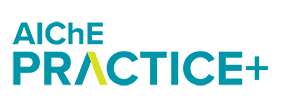
In chemical processing, understanding how adverse incidents can arise is an essential component of effective process safety management. This intermediate course is the first of a group directed at the management of hazards and risk. Students will examine the concepts of hazards, consequences and risk and learn how physical conditions and material properties can present hazards in a process. Finally, students will discuss how failures in selected equipment categories and deficient performance in management systems and procedures can allow hazards to evolve into adverse incidents.
Using case studies, the course will introduce students to the thought process safety practitioners use to anticipate hazardous situations when participating in hazard identification and risk assessment activities. This course positions students to better appreciate the courses that immediately follow in sequence, which will describe the tools available to manage hazards and risks after they are identified and understood.
Unit 1:
- Define hazard, consequence and risk, and provide an example of each
- Describe a risk matrix
Unit 2:
- Identify five physical conditions that present intrinsic hazards to personnel or equipment
Unit 3:
- Identify four common material hazards
- Given a case study, show how a material hazard led to an adverse event
Unit 4:
- Examining case studies, describe examples of equipment and procedural failure
- Identify codes, standards and practices applicable to the process industries
This intermediate course is for upper-level chemical engineering undergraduates who have had some exposure to process safety.
Before taking this course, it is recommended that the student take ELA969 “Understanding Hazards and Risk” first. In addition, it is recommended that the student have a basic understanding of (at least) toxicological hazards, fire and explosion hazards, and chemical reactivity hazards before taking this course. The SAChE undergraduate process safety curriculum (https://www.aiche.org/ccps/community/technological-communities/safety-and-chemical-engineering-education-sache/certificate-program/Level-Two-Intermediate-Curriculum) includes courses that cover these topics.
- Unit 1 - What are Hazards, Consequences and Risks?
- Define hazard, consequence, and risk, and provide an example of each
- Describe a risk matrix
- Unit 2 - Potential Consequences Arising from Physical Conditions
- Identify five physical conditions that present intrinsic hazards to personnel or equipment
- Unit 3 - Potential Consequences Arising from Material Hazards
- Identify four common material hazards
- Given a case study, show how a material hazard led to an adverse event
- Unit 4 - Potential Consequences Arising from Equipment and Procedural Failings
- Examining case studies, describe examples of equipment and procedural failure
- Identify codes, standards, and practices applicable to the process industries
Find answers to questions about registration and refunds, tuition and fees, travel and lodging (for location-based courses), how eLearning courses work, how credits work, and more.


